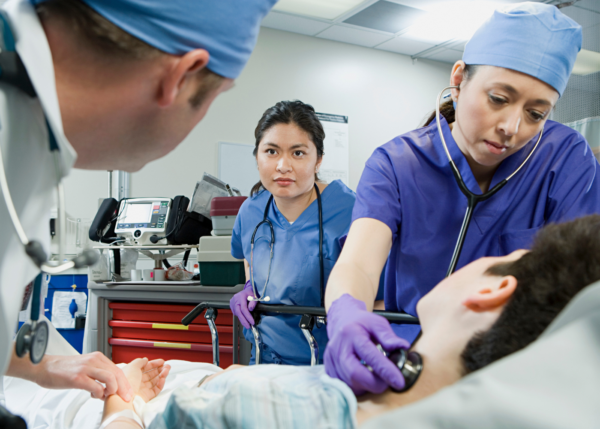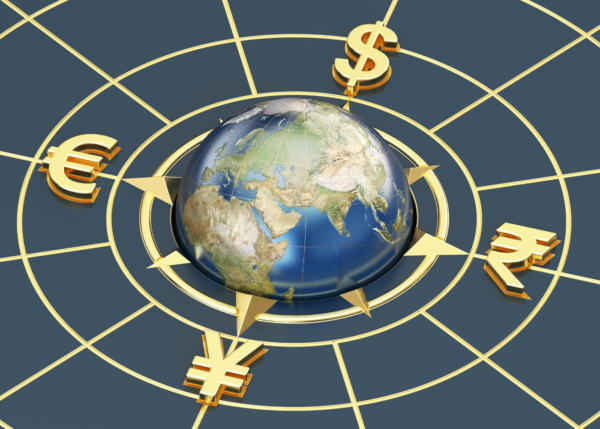FACT: The number of African American-owned exporters grew by 60% in 2022. (Most recent year available.)
THE NUMBERS: African American businesses exporting to Africa –
| Year | Number of firms | Export total |
|---|---|---|
| 2022 | 491 | $192 million |
| 2021 | 163 | $105 million |
| 2020 | 138 | $45 million |
| 2019 | 278 | $45 million |
| 2018 | 200 | $27 million |
| 2017 | 300 | $62 million |
* Census and BEA data collaboration
WHAT THEY MEAN:
A Black History Month look at U.S.-African trade and its role in the recent African American export boom:
As a point of departure, here’s then-President Bill Clinton peering into the future, as he signs the African Growth and Opportunity Act in the millennial spring of 2000:
“Sub-Saharan Africa is home to more than 700 million people [ed. note: now 1.25 billion], one of our biggest potential trade partners. I say potential because American exports now account for only 6 percent of the African market. This bill will surely change that as it expands Africa’s access to our markets and improves the ability of African nations to ease poverty, increase growth, and heal the problems of their people. It promotes the kinds of economic reform that will make sub-Saharan nations, on the long run, better allies, better trade partners, and stronger nations.”
Scrolling ahead a quarter-century: A unique Census Bureau/Bureau of Economic Analysis data collaboration, “U.S. Exporting Firms by Demographics,” provides the most detailed statistical portrait of a trading community anywhere in the world, with insights on exporting companies by size, export market, ownership by race and ethnicity, gender, veteran status, and more. Its count two years ago revealed an exceptionally severe blow to African American exporters during the COVID-19 pandemic. As economies worldwide closed the overall count of American exporting businesses fell by 17,000, or 5%. Loss counts varied by ownership but, in most cases, not by a lot: the Census/BEA counts of white-owned and women-owned exporters, for example, fell by 1.5% and 2%, that of Hispanic businesses dropped by 7%, and the number of Asian-American and Native American exporters remained stable. The African American exporting community, by contrast, lost a third of its members, contracting from 1,514 in 2019 to 1,001 in 2020.
The next edition, as we noted last February, found a modest but hopeful rebound in 2021, to 1,139. And the most recent, out three weeks ago, reports a surge to 1,802. Its count of businesses and their $1.2 billion in exports — substantially driven by a boom in exports to African customers — are both the highest numbers in the six-year-old series. A table:
| Year | Number of Firms | Total Exports |
|---|---|---|
| 2022 | 1,802 | $1.195 billion |
| 2021 | 1,139 | $1.122 billion |
| 2020 | 1,001 | $1.097 billion |
| 2019 | 1,514 | $806 million |
| 2018 | 1,400 | $830 million |
| 2017 | 1,200 | $616 million |
Policy likely helped support this strong recovery: Gina Raimondo’s Commerce Department made a concerted effort to raise the exporter count through more engagement with this and other “underserved” — women, rural, veterans, ethnic — communities through the Global Diversity Export Initiative. So did the economic environment across the Atlantic – Africa’s GDP growth is a point above the world rate, and the continental market is becoming simpler, more efficient, and easier for small businesses to manage as the African Continental Free Trade Area “AfCFTA” enters into force. African American firms seem to be tapping this opportunity especially quickly — almost 500 of the 1,802 exporters have African customers, and the African share of the total sales has jumped from 6% before the pandemic to 16%. A 2022 table by market:
| Number of Exporters | Export Value | |
|---|---|---|
| World | 1,802 | $1.195 billion |
| Mexico | 154 | $225 million |
| Africa | 491 | $195 million |
| (Nigeria) | 204 | $76 million |
| (Ghana) | 104 | $14 million |
| (South Africa) | 41 | $10 million |
| Canada | 460 | $162 million |
| European Union | 319 | $100 million |
| United Arab Emirates | 110 | $85 million |
| United Kingdom | 201 | $63 million |
| Caribbean Islands | n/a | $55 million |
| All Other | n/a | $310 million |
In sum, very much the situation President Clinton imagined in which African growth supports American businesses and production, with particular (though by no means exclusive) benefits for the diaspora.
The cautionary notes in this relate more to policy than data or economics. Like all U.S. exporters, African American exporters are at risk of retaliation and loss of markets as the Trump administration threatens tariffs against America’s major trading partners. Mexico, Canada, and the EU, all recent targets, provide 40% of African American export earnings – a bit below the 50% for all U.S. businesses and far below Native American exporters’ 78%, but still a lot. On a lesser but still important scale, it isn’t clear that the newly confirmed Commerce Secretary, Mr. Lutnick, will have the same interest in export promotion generally, or this community specifically, that his predecessor did. And the African Growth and Opportunity Act itself, now approaching its 25th anniversary and still the “foundation” of U.S.-Africa economic relations today, ends this September — which would mean some fraying of business ties — unless Congress renews it.
So a lot to do and some risk to manage. But still, a happy piece of transatlantic community-building, African/African American business success, and modern black history to record this February.

FURTHER READING
Data:
From Census and BEA, “Demographics of Exporting Companies” data for 2022, with links to reports for 2017 through 2021.
Community links:
The Pew Center reports on America’s black-owned businesses.
The Brookings Institution finds a post-COVID boom in African American business startups.
The Hilltop, Howard University’s student paper, looks at the challenges and achievements of D.C.-area African American small businesses.
And also from the Pew Center, background and data on African and Caribbean immigrant families in the United States.
AGOA:
President Clinton at the AGOA signing ceremony, May 2000.
… and the U.S. Trade Representative Office’s 2024 AGOA report.
An origin point:
If AGOA is the foundation of U.S.-African economic relations today, here’s a deep-past predecessor: President Lincoln’s Ambassador to the U.K., Charles Francis Adams (yes, son of President John Quincy & grandson of Founder John) spent most of the autumn of 1862 facing down London Confederate sympathizers and outwitting would-be gun-runners. But he also took a week to inaugurate U.S. commercial diplomacy with sub-Saharan Africa, to join Maryland-born Liberian President Stephen Benson as signatories of the 1862 U.S.-Liberia Treaty of Amity and Commerce. Ambassador Adams’ private diary for that rainy October day (via the Massachusetts Historical Society) shows some emotion:
“I had received this week powers to negotiate a Treaty of commerce with the Republic of Liberia. I notified President Benson of the fact, and he came this day to see me about it. I gave him the form of Treaty he had first sent through me to Washington, modified as it came back to me, both of us be put into shape and executed early next week. He did so. Thus it seems that my name is to be on the first national act recognizing the restoration of the status of the Americo-African to a condition of equality with the White. I think it is an era in our history. We received the mail bags from America and found the news generally quiet cheerful. A long letter from Charles [Charles Jr., then a Union Army Lieutenant] to his mother, giving an interesting narrative of the whole campaign in Maryland, including the two great actions at South mountain and Antietam, which he witnessed. I returned thanks to God for all his mercies, and especially for his preservation thus far safe and well.”
And some then-and-now from Ghana, Ethiopia, and Madagascar:
Dr. King reflects in 1957 on Ghanaian independence, transatlantic parallels between civil rights and decolonization, and the potential African American role in African economic development.
… and today’s Accra-based African Continental Free Trade Area Secretariat.
The Ethiopian Embassy recalls the launch of U.S.-Ethiopian trade and diplomacy in the 1903 Commercial Treaty signed by Ohio diplomat Robert Skinner and Emperor Menelik II – “King of Kings” by title, best remembered as war leader and preserver of Ethiopian independence, but also a capable commercial strategist when opportunity arose.
… and at its modern Addis Ababa HQ, the African Union on continental integration.
From 1867, the Treaty of Amity and Commerce with Queen Rasoherina’s Kingdom of Madagascar. Sample:
“Commerce between the people of America and Madagascar shall be perfectly free, with all the privileges under which the most favored nations are now or may hereafter be trading. Citizens of America shall, however, pay a duty, not exceeding ten per cent., on both exports and imports in Madagascar, to be regulated by a tariff mutually agreed upon, with the following exceptions: Munition of war, to be imported by the Queen of Madagascar into her dominions, or by her order. Prohibited from export by the laws of Madagascar are munition of war, timber, and cows. No other duties, such as tonnage, pilotage, quarantine, light-house dues, shall be imposed in ports of either country on the vessels of the other to which national vessels or vessels of the most favored nations shall not equally be liable.”
… and U.S. Amb. Claire Pierangelo (2023) applauds Madagascar’s success as an AGOA clothing exporter.
ABOUT ED
Ed Gresser is Vice President and Director for Trade and Global Markets at PPI.
Ed returns to PPI after working for the think tank from 2001-2011. He most recently served as the Assistant U.S. Trade Representative for Trade Policy and Economics at the Office of the United States Trade Representative (USTR). In this position, he led USTR’s economic research unit from 2015-2021, and chaired the 21-agency Trade Policy Staff Committee.
Ed began his career on Capitol Hill before serving USTR as Policy Advisor to USTR Charlene Barshefsky from 1998 to 2001. He then led PPI’s Trade and Global Markets Project from 2001 to 2011. After PPI, he co-founded and directed the independent think tank ProgressiveEconomy until rejoining USTR in 2015. In 2013, the Washington International Trade Association presented him with its Lighthouse Award, awarded annually to an individual or group for significant contributions to trade policy.
Ed is the author of Freedom from Want: American Liberalism and the Global Economy (2007). He has published in a variety of journals and newspapers, and his research has been cited by leading academics and international organizations including the WTO, World Bank, and International Monetary Fund. He is a graduate of Stanford University and holds a Master’s Degree in International Affairs from Columbia Universities and a certificate from the Averell Harriman Institute for Advanced Study of the Soviet Union.









